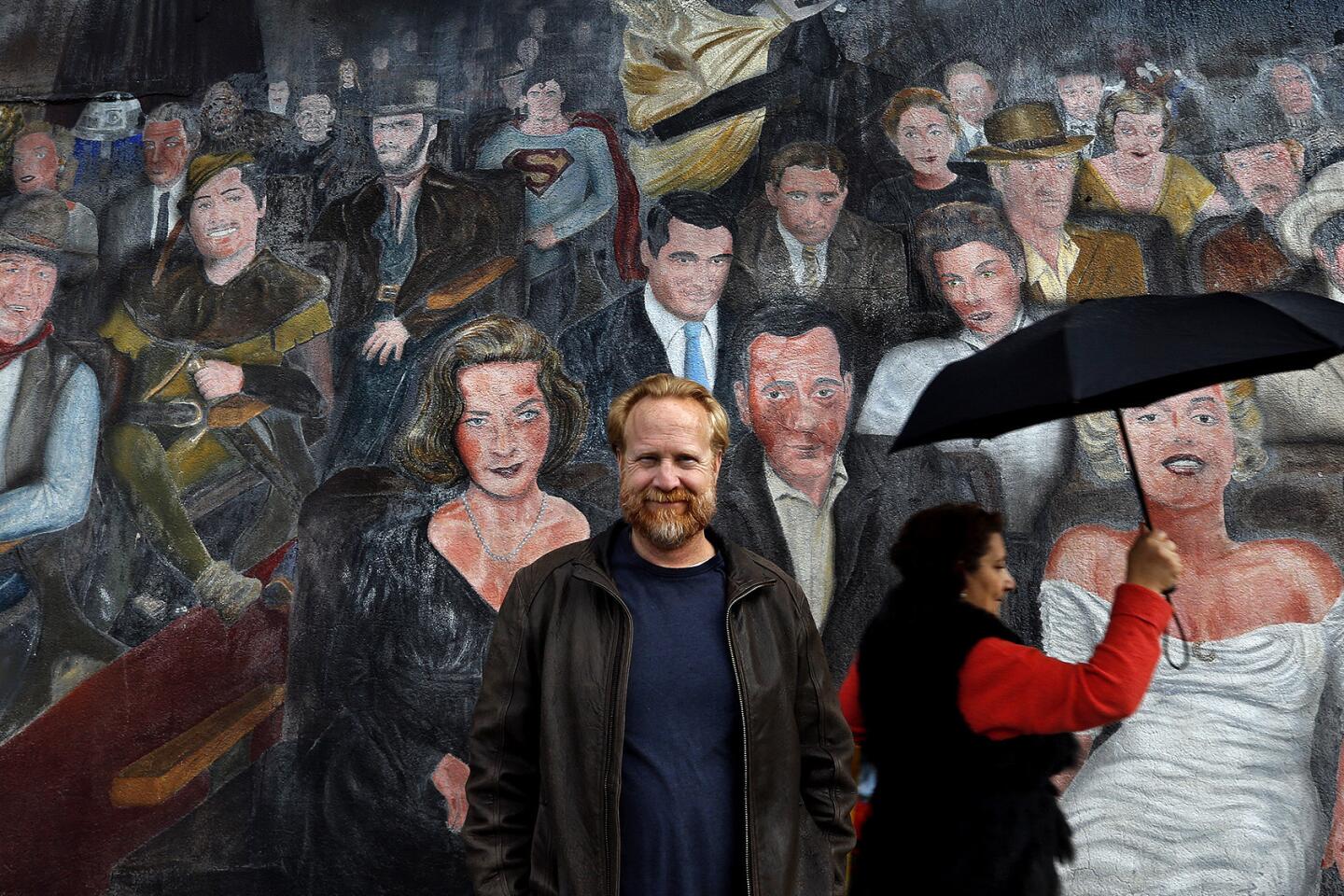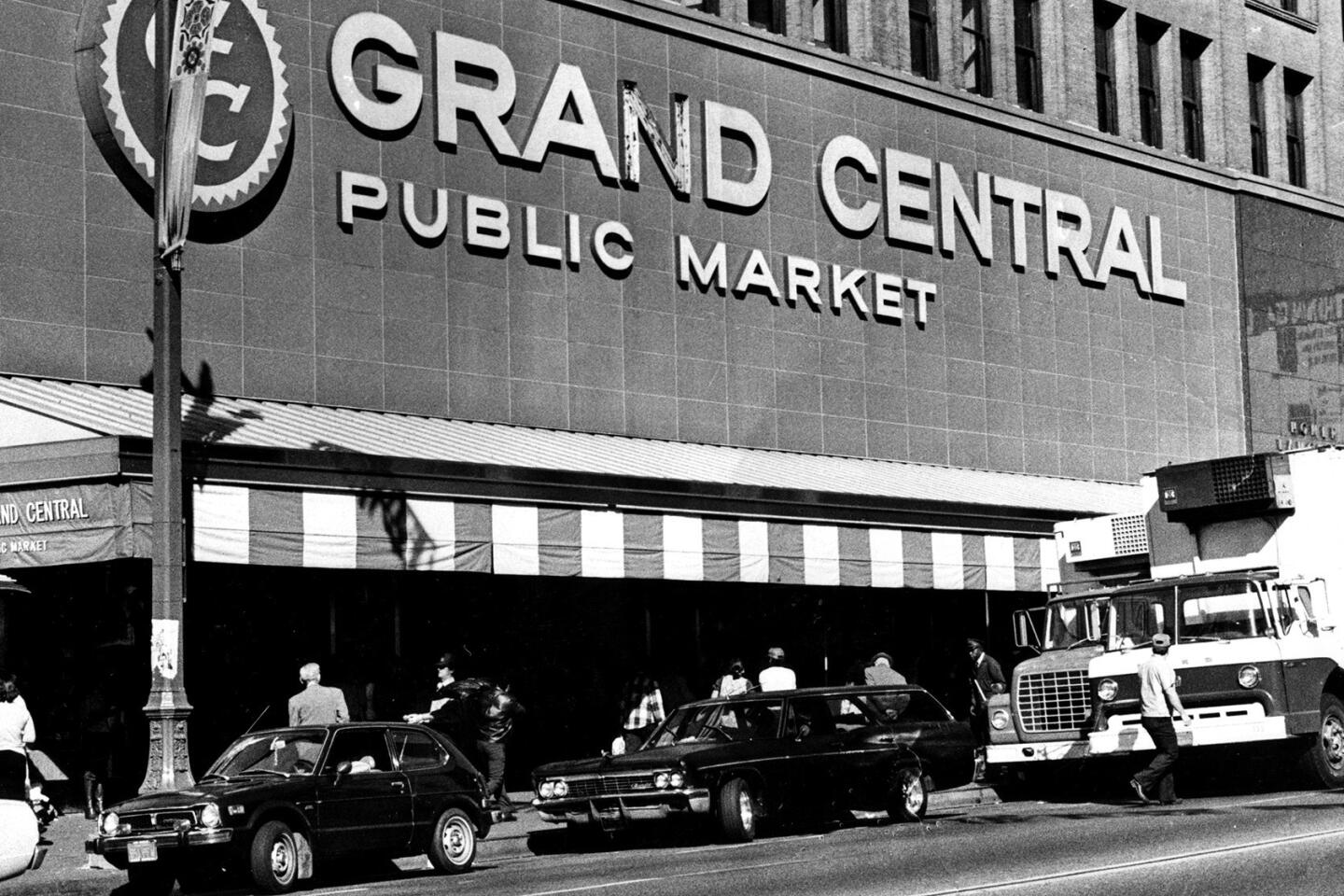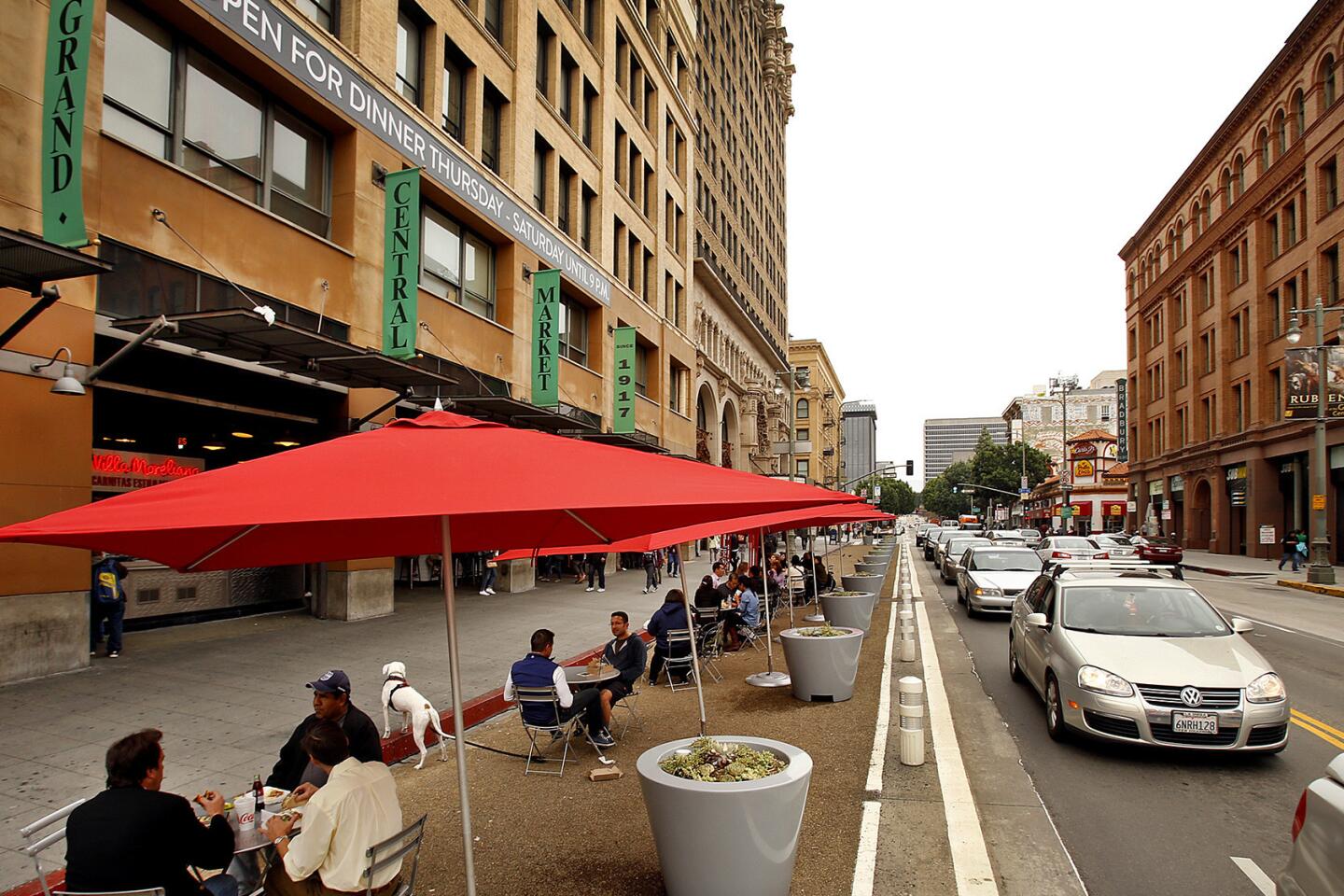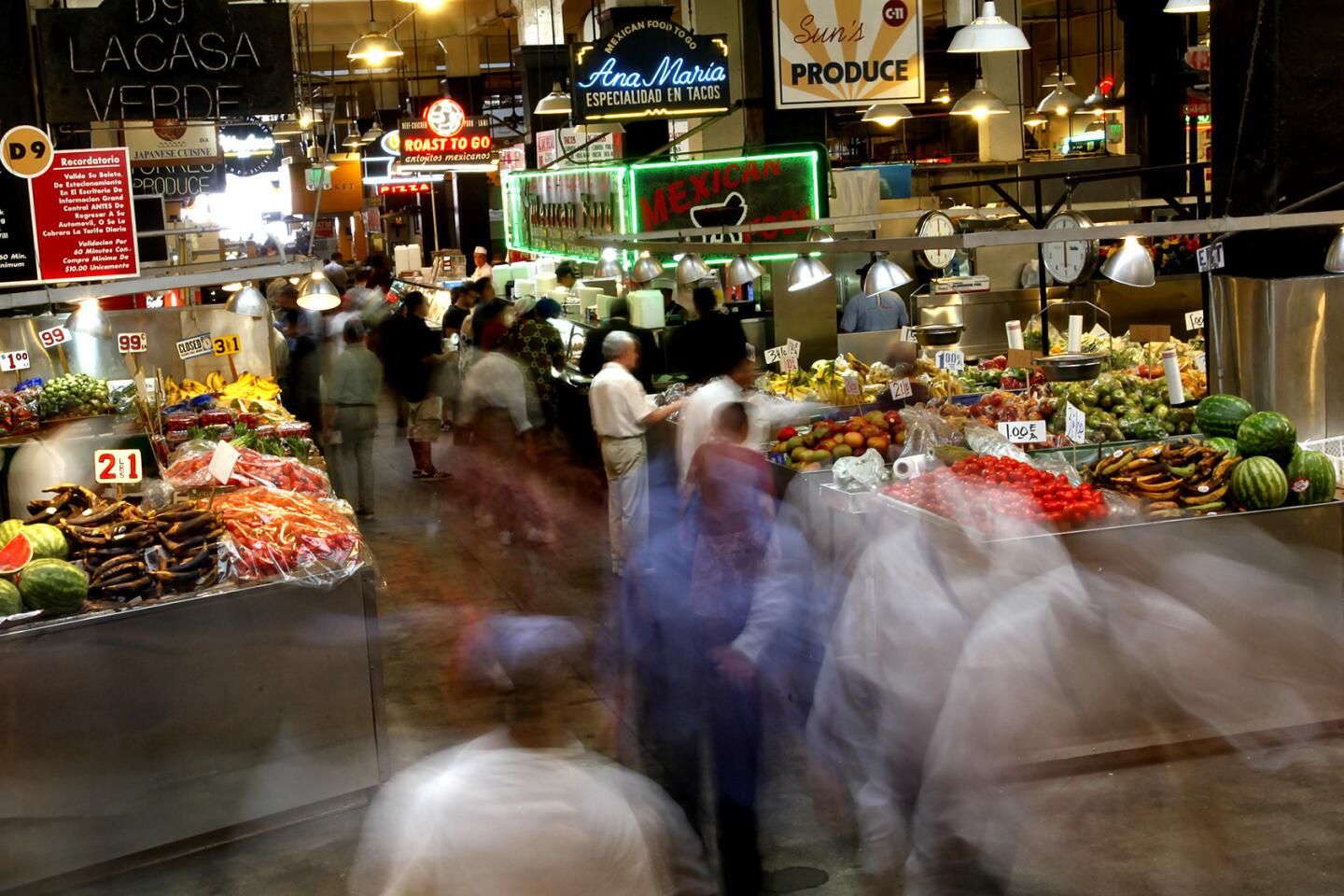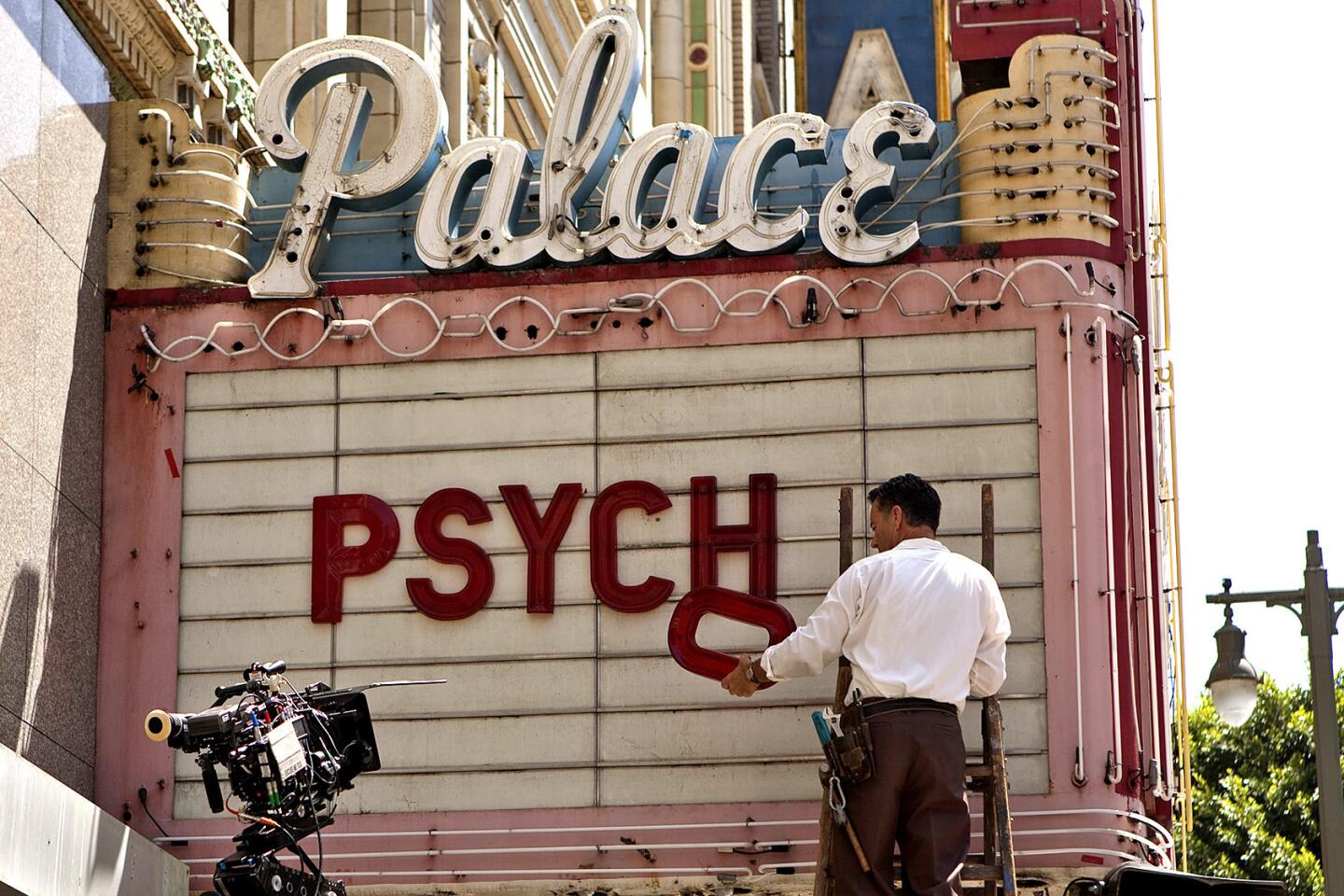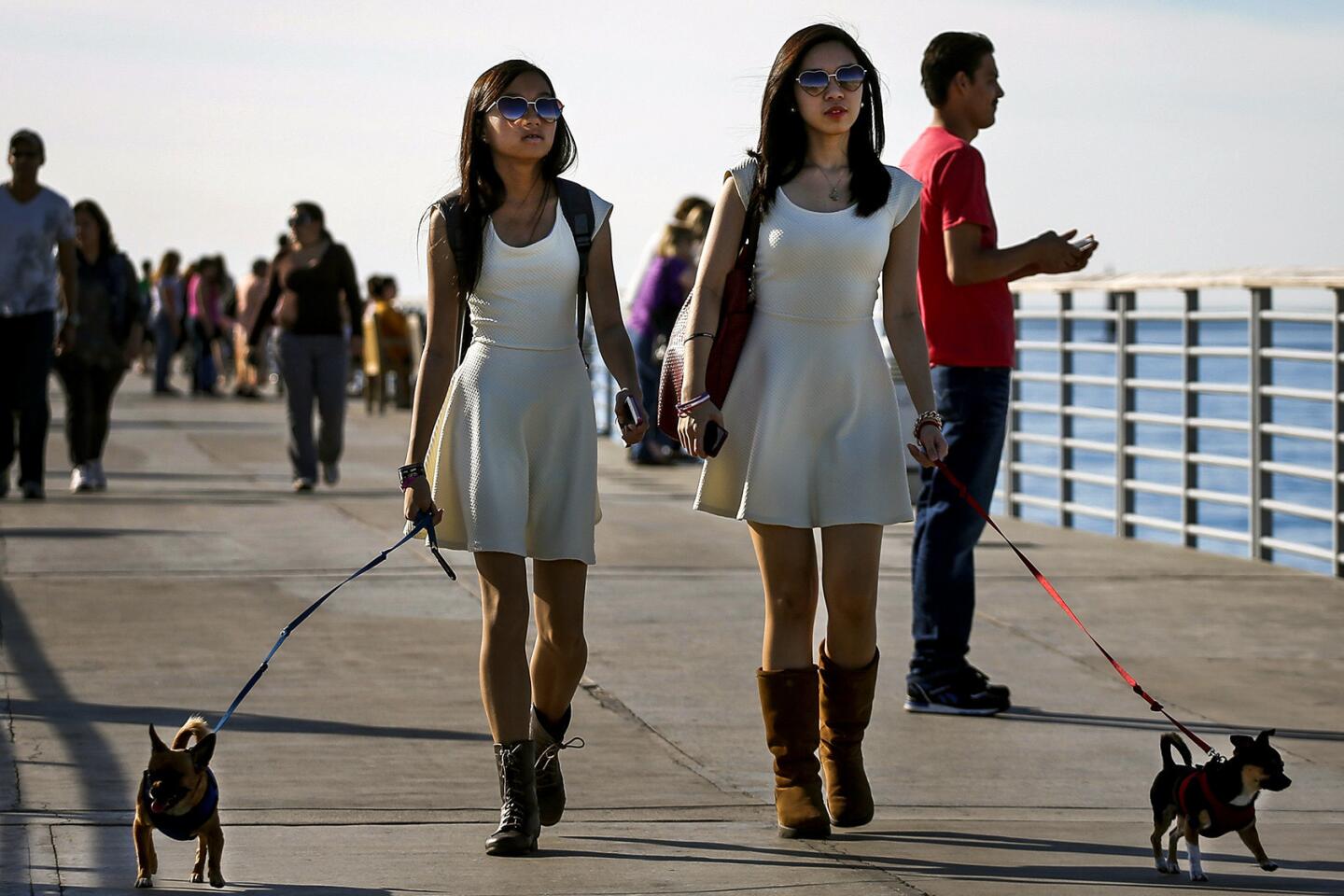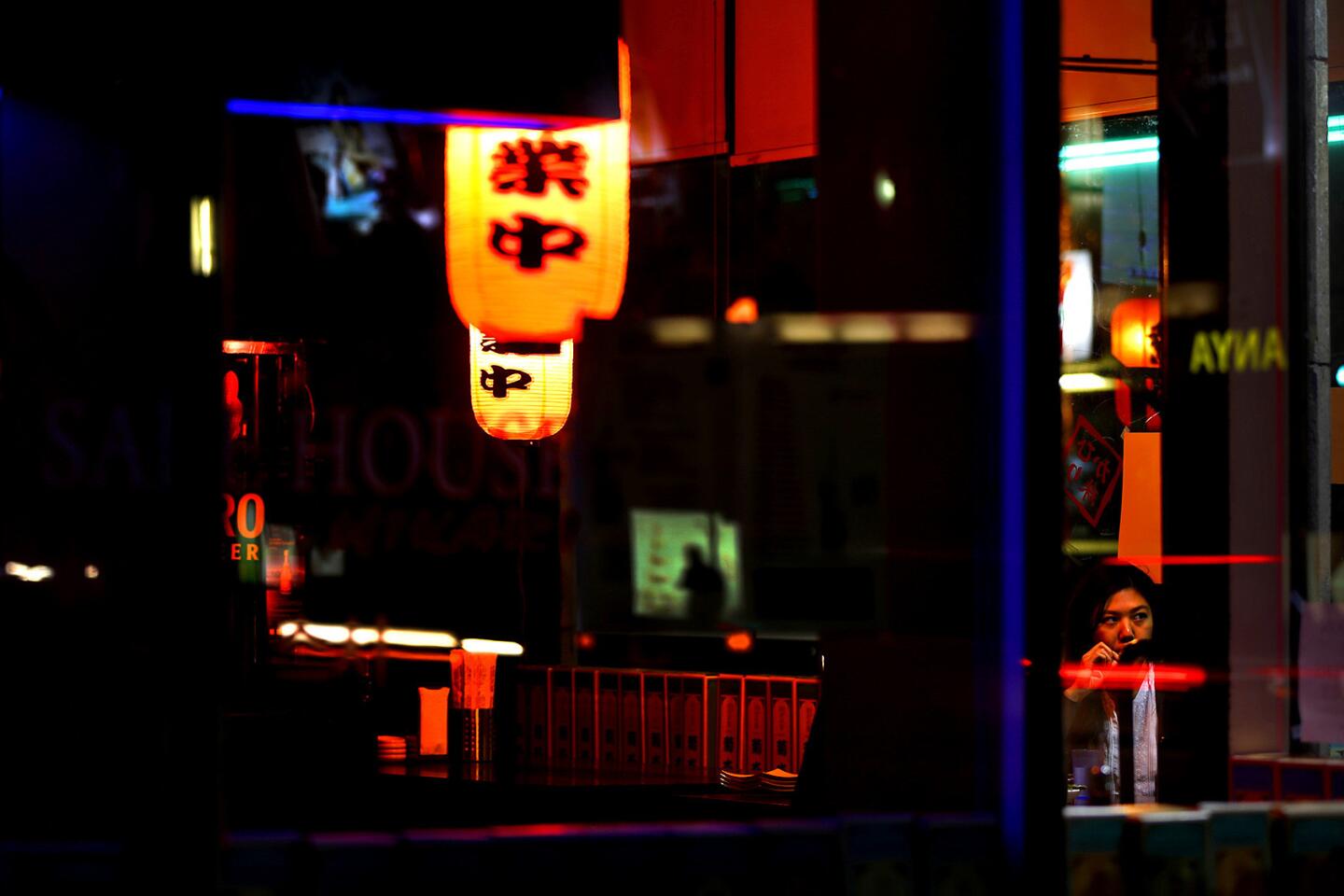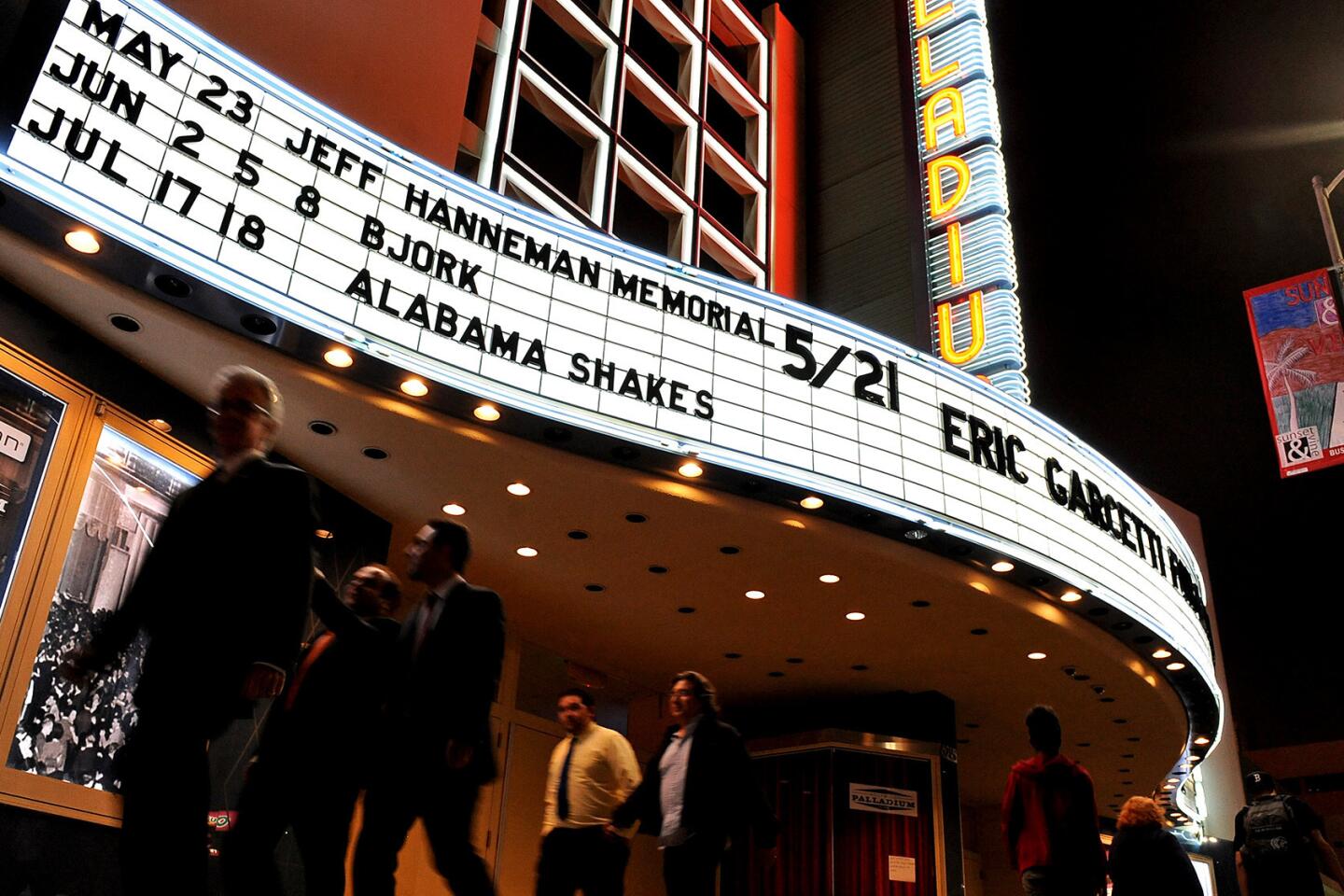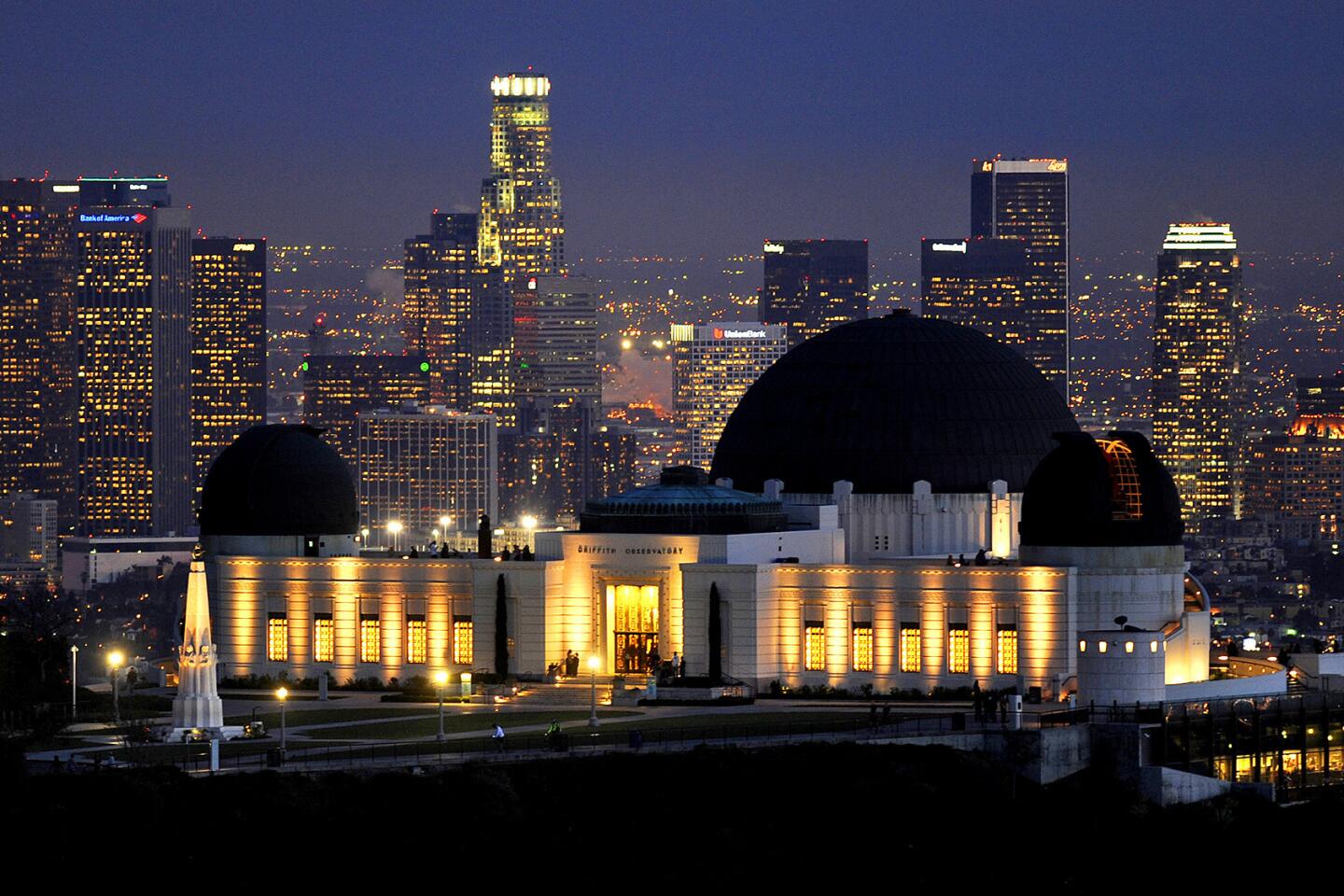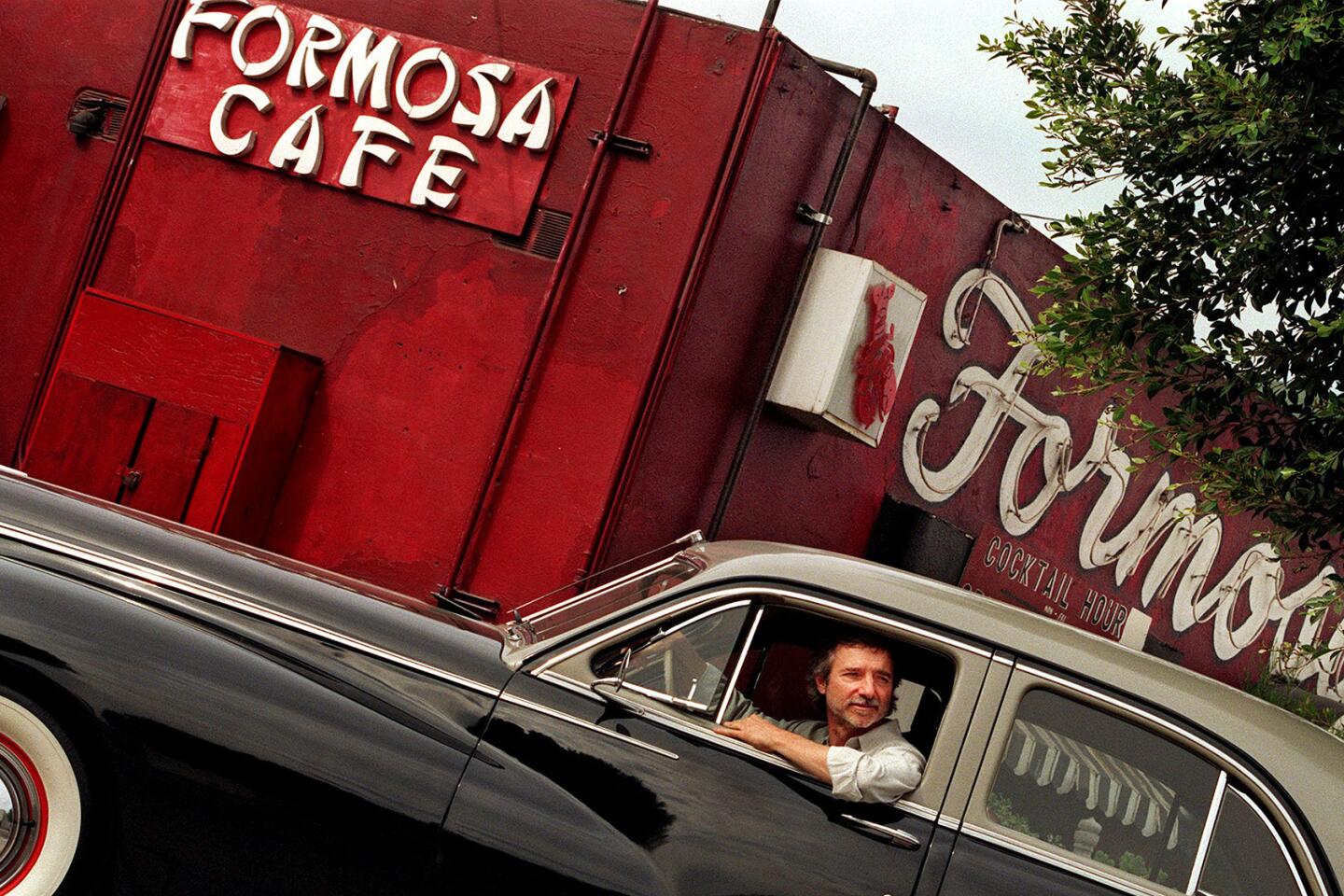Lights, camera, colors give ‘La La Land’ its lavish look
The year’s most-nominated film is notable equally for its singing and dancing … and for turning a sprawling metro area into a candy-colored musical fantasy.
“It was all about creating a romantic Los Angeles,” says “La La Land” cinematographer Linus Sandgren, an Oscar nominee for his work, “to pick the moments when the town is more magic than it normally is.
“Some of this film takes place in reality and some takes place in some sort of dream. [Writer-director Damien Chazelle] wanted to make sure there wasn’t much of a jump between reality and dream, so we made reality a little more heightened, as well as magic in a way. Damien felt the film should feel romantic, with colors like Technicolor.”
“La La Land” lives at times in the deep, rich blues of the evening before it gives way to black; fleeting greens in those magic-hour skies that somehow turn pink, a woman dancing in a bright yellow dress as night falls. But as some songs were famously captured live, these hues were also mostly achieved in camera.
“The chroma saturation isn’t boosted; things in the set are that colorful. The lights, the dresses … it’s not like the way you boost colors on the TV,” says Sandgren with pride.
The filmmakers even chose rarer mercury-vapor street lights rather than more common sodium-vapor ones for the former’s slight turquoise tint.
“The film stock captures colors like the cyan in those street lights much better than digital cameras do,” Sandgren says. “So they exist in the negative, which meant we didn’t really need to do anything about them; they were just there already.”
Mary Zophres, nominated for the film’s costumes, says, “The first three days of prep, we went through the script page by page, scene by scene. Damien did a short where he spliced together a bunch of films he found inspiring. It was deeply helpful because it had a spirit to it. Films like ‘The Young Girls of Rochefort’ and ‘The Umbrellas of Cherbourg,’ all directed by Jacques Demy, [who] was inspired by the MGM films of the late ’40s and ’50s.
“We realized the use of color in those films was as choreographed as the dance numbers were. Damien told us, ‘There’s this arc in the movie and it has to peak at the planetarium and it comes down from there after they have their dating montage.’ So the color sort of gets removed because it’s an expression of their romantic emotion in the film — it dissipates until [Mia, Emma Stone’s character] is literally wearing black and white at her one-woman show.”
By locations manager Robert Foulkes’ count, the production shot 48 locations in 42 days.
“The summer falling-in-love montage, we made a list of places the two might go on dates and came up with 10, 15 places,” says Foulkes. Ryan Gosling’s now-iconic “City of Stars” pier stroll was a setting stumbled upon as they shot at the Lighthouse Cafe nearby, but other locations were handpicked.
“The ‘Somewhere in the Crowd’ party and Mia’s apartment had probably the most wonderful use of color for the interiors,” says Foulkes. “Those were fun canvases for the design team and costumes, putting splashes of colors on walls and wallpaper, the costumes drifting through.”
The expressionistic use of color combined with lengthy tracking shots to make the viewer feel like a participant in a dream.
“Damien had that in mind all the time, especially for the dance numbers,” says Sandgren of the long, unbroken takes. “That was to let the viewer feel like a character, physically involved in the scene.”
Sandgren points to the number in Mia’s apartment, an upbeat four-woman dance through a small interior space.
“The Steadicam operator [Ari Robbins], he’s a genius,” says Sandgren, for dissecting complex camera moves through the tight area. “When she comes out and the camera looks up at the palm tree, then we crane up and look down on the girls in formation, then down to lead them to the car — that whole move, going up and down, was always too slow until we nailed it.”
For that scene, Foulkes found a spacious-enough penthouse on Wilshire Boulevard and a courtyard in Long Beach that could convincingly double as its humble exterior.
With those camera angles, Zophres thought, “they should all be in what they call a ‘circle skirt’ so you’d get these graphic circles from above. So every time I see the movie — and I’ve seen it like eight times, I love it so much — when that camera goes up and the girls spin in those colors, the blue and the red and the yellow and the green … ‘Yeaaaah! It worked.’ ”
ALSO:
Looking for Ryan Gosling and Emma Stone’s ‘La La Land’? Find James Dean’s crowbar, for starters
How many times have you seen ‘La La Land’? Bet you still didn’t know this
‘La La Land’ looks beautiful, but gentrification makes it harder for old Hollywood to play itself
More to Read
From the Oscars to the Emmys.
Get the Envelope newsletter for exclusive awards season coverage, behind-the-scenes stories from the Envelope podcast and columnist Glenn Whipp’s must-read analysis.
You may occasionally receive promotional content from the Los Angeles Times.
